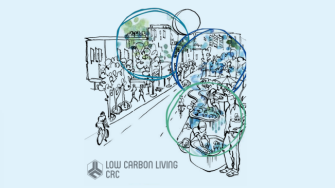
In response to questions raised by the Greater Sydney Commission (GSC), this project will investigate and analyse climate mitigation and energy consumption for the planned ‘Third City’ - - the emerging, Western Parkland City around the new airport - at two distinct scales:
At the mesoscale, investigate and analyse:
a) The specific climatic conditions in the Third city during 2038 and 2050 considering the impact of the global climate change and the increase of the density of the urban built form
b) The impact of that climate change and increasing urban density on energy using building optimisation techniques
c) The potential impact of the major mitigation technologies singly and in combination under the above conditions.
d) The use of new methods to consider geographic environments to estimate more accurately major mitigation technologies in the neighborhood using mesoscale modelling
e) The impact of the considered mitigation technologies and of their contribution to energy consumption and heat related mortality.
At the building scale, investigate and analyse:
a) The impact of climate change and future urbanisation on the energy consumption of buildings
b) The optimum future urban design to improve the urban microclimate given the expected increase of the ambient temperature caused by the global and local climate change.
c) The optimum design of future buildings in order to best respond to the changing climatic conditions.
d) The best methods to optimise the added value of local energy conservation measures applied in buildings.
These activities will result in a comprehensive set of reports for presentation to the GSC primarily but also to OEH and the affected local governments through the Resilient Sydney initiative led by the City of Sydney.
S/Prof Mat Santamouris, UNSW
Complete
03/2019
- Publications
- Posters
- Partners
- News
- Students
CRCLCL Project Reports
SP0012u1: Sydney’s Third City Final report
Overheating of cities is causing serious energy, environmental and health problems and it has a serious impact on the whole economic and cultural life of cities. To counterbalance the impact of high urban temperatures several mitigation technologies have been proposed, developed and implemented. Monitoring of several large-scale urban projects involving the application of mitigation technologies has demonstrated the possibility decreasing the peak ambient temperature of the precincts up to 2.5 °C.
Analysis reveals that the magnitude of the overheating depends on many parameters of which the more important are: The layout and the characteristics of the buildings and open spaces, the type of the materials used, the released anthropogenic heat, the land use, the climatic conditions, etc. Several studies have been performed to understand and evaluate the impact of some of the above parameters; however, detailed studies to investigate the impact of the precincts’ layout and characteristics on the urban overheating are not widely available.
sydneys third city sp0012u1 final report (32960224 PDF)
Partners on this project
- UNSW Sydney